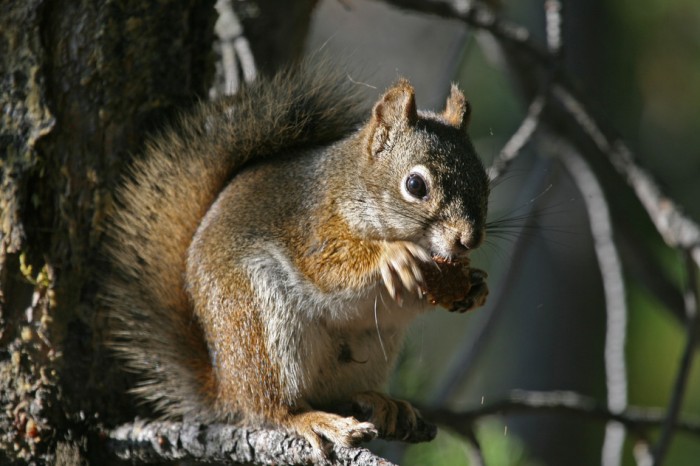
Squirrel in a Tree Eating
<>
Squirrels can be a nuisance and a major headache when they find their way into your home. These small, nimble creatures seek out shelter in homes, attics and crawl spaces in order to build nests and reproduce without fear of predators. Unfortunately, the most attractive new home for these critters may be the one in which you’re already living. If you’re agonizing over how to get rid of squirrels in your house, rest assured that there are ways to humanely chase these furry beasts from your cozy abode.
Contents
Why Did the Squirrels Choose My Home?
The first step in permanently clearing your house of these four-legged intruders is to understand why they chose to make your home their new dwelling in the first place. The most common reason that squirrels enter homes is to protect themselves from predators while they are in their gestational period, and to provide their babies with a safe home after their arrival. This practice of nesting in the homes of humans is not only an annoyance, but in some cases a health and safety hazard. Squirrels will bring in nesting materials, such as leaves, brush, sticks and debris that can pose a risk of fire. In addition, they have been known to chew through wires and cause electrical damage and shorts in your home’s wiring.
What Dangers do Squirrels Pose?
As the squirrels nest, they will urinate and leave droppings in your home that may carry a host of diseases harmful to your family and pets. The smell of the waste materials will attract more squirrels to your home. In addition, if your family cat or dog should accidentally corner a squirrel in your home, they run the risk of being attacked by a possibly rabid animal. This problem will only compound if the squirrel is allowed to reproduce in your home. When that happens, instead of one animal, you will have six or seven squirrels to contend with.
Live Traps
There are several ways to get rid of squirrels in your house. The most common way is to use live traps. These humane traps capture the animal where it will stay until you dispose of them. Live traps lure the squirrels with a strong scent, and once trapped, the squirrel is unable to escape. You can then remove the animal yourself or call an animal control agency to collect the animal. Be aware that it is illegal in some cities to dispose of a trapped squirrel yourself. It is best to check with your local city or town before setting squirrel traps. Another concern with using live squirrel traps is the possibility that you will trap the mother squirrel only, leaving the squirrel babies without a source of nourishment. The baby squirrels then perish in your home, creating a whole new host of problems.
Exclusion Traps
Exclusion trapping requires a bit more work, but is more effective in getting rid of the squirrels in your home. In exclusion trapping, the homeowner should seal off all possible points of exit and entry to the home. This includes gaps in the foundation, gutters, and weak spots that lead to the attic, garage or basement. One space is allowed to remain to allow the squirrel to leave to find food and water. When the squirrel attempts to return, it is trapped in the trap and is excluded from re-entering your home. Once again, it is important to determine how many squirrels you are dealing with, as you don’t want to exclude the mother squirrel and leave five squirrel babies behind in your home.
Getting rid of squirrels in your home doesn’t have to be difficult or painstaking. By understanding why and how squirrels enter you home, you have a better chance of waving goodbye to these critters permanently.



